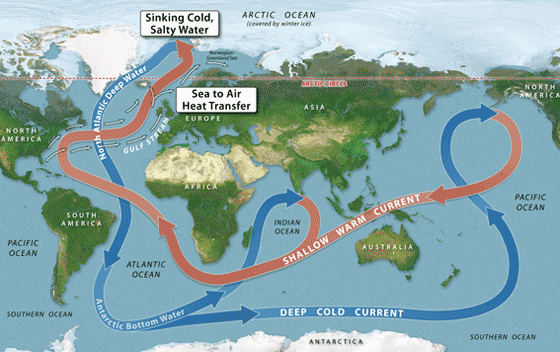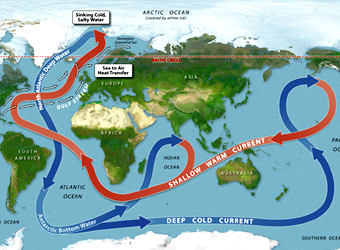
- The Ocean Conveyor Belt
- Ocean circulation is driven by density differences. (Density is controlled by ocean temperature and saltiness.) Cold, dense water in the Arctic merges with salty water from the Gulf Stream to create the sinking North Atlantic Deep Water (NADW) in the Norwegian-Greenland Sea. The NADW helps to drive global ocean circulation.
- Illustration The M Factory © Smithsonian Institution
A Global Player
Arctic sea ice influences global ocean circulation and, in turn, our climate. How?
When ocean water freezes, it rejects salt. The layer of cold water beneath the sea ice becomes saltier and denser, making it heavy enough to sink. In the Arctic, cold water sinks in the Norwegian-Greenland Sea. As a result, it is replaced by shallow, warm water that moves northeast from the tropics.
But when sea ice—and glaciers—melt, they release freshwater into the ocean. Freshwater, however, is not dense enough to sink and could disrupt ocean circulation and affect the exchange of heat between the poles and the tropics. In turn, global climate could change.

- Ocean circulation is driven by density differences. (Density is controlled by ocean temperature and saltiness.) Cold, dense water in the Arctic merges with salty water from the Gulf Stream to create the sinking North Atlantic Deep Water in the Norwegian-Greenland Sea and help drive global ocean circulation.
